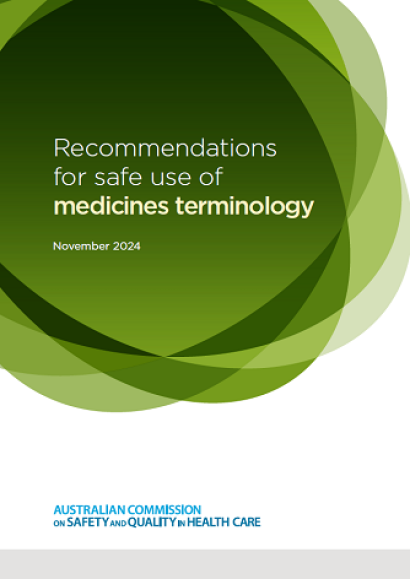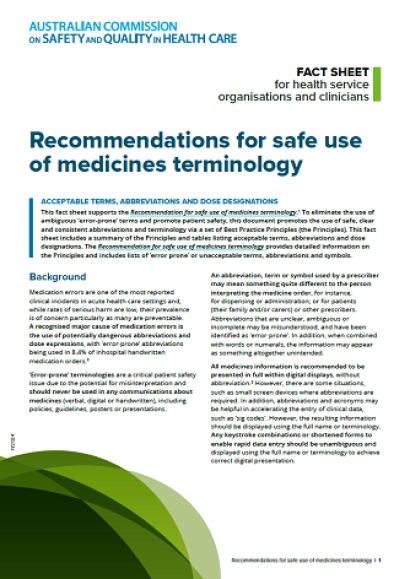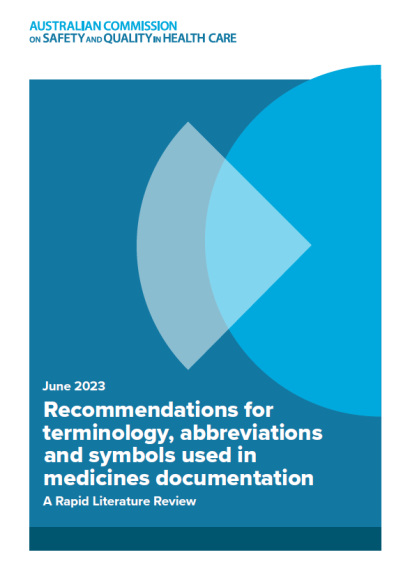Recommendations for safe use of medicines terminology
Medication errors are one of the most reported clinical incidents in acute health care settings and, while rates of serious harm are low, their prevalence is of concern particularly as many are preventable. A recognised major cause of medication errors is the use of potentially dangerous abbreviations and dose expressions.
New resources
Abbreviations and terminology as safety issues
‘Error-prone’ terminologies have the potential for misinterpretation and should never be used in any communications about medicines (verbal, digital or handwritten), including policies, guidelines, posters or presentations.
An abbreviation, term or symbol may mean something quite different to the person interpreting the information. Abbreviations that are unclear, ambiguous or incomplete may be misunderstood. In addition, when combined with words or numerals, the information may appear as something altogether unintended.
These terminologies are error‑prone and are a critical patient safety issue.
Recommendations for safe use of medicines terminology
The Recommendations for safe use of medicines terminology promotes and underpins the use of safe, clear and consistent abbreviations and terminology for the National Guidelines for On-screen Display of Medicines Information and the National standard for labelling dispensed medicines. All three documents are applicable in all health settings.
All medicines information is recommended to be presented in full within digital displays, without abbreviation. However, there are some situations, such as small screen devices where abbreviations may be necessary. Abbreviations and acronyms may also be helpful in accelerating the entry of clinical data, such as ‘sig codes’. However, any keystroke combinations to enable rapid data entry should generate the information in full or with appropriate terminology to achieve unambiguous digital presentation.
To eliminate the use of ambiguous ‘error-prone’ medicines terminology and promote patient safety, this document sets out:
- To identify and explain the problem with the use of unacceptable or ‘error prone’ medicines terminology
- Best Practice Principles for safe, clear and consistent terminology for medicines
- Acceptable terms and dose designations for medicines
- Standardised abbreviations for circumstances where full expression is not possible.
Fact sheet
This fact sheet includes 17 Best Practice Principles and a list of acceptable terms, abbreviations and dose designations that apply to all medicine orders and medicines documentation. This includes all handwritten, pre-printed or electronically generated or displayed medicine-related resources used in Australian hospitals or health services.
Verbal communications should also avoid use of abbreviations and outmoded or truncated language when relaying clinical information about a person’s medical treatment. This includes effective communication of critical information during clinical handover.
Rapid literature review
In 2023 the Commission engaged a team from Macquarie University, Australian Institute of Healthcare Innovation, to conduct a Rapid literature review to consider the safety issues related to incidents and reports regarding the use of safe and unsafe abbreviations, terminology and symbols. This work was led by Dr Magda Raban. The findings from the Rapid literature review informed the review of the 2016 Publication and development of the Recommendations for safe use of medicines terminology (2024).



